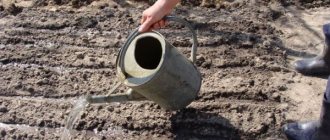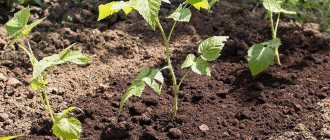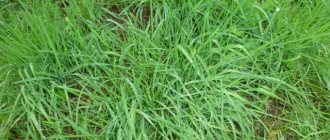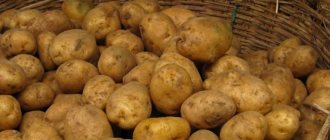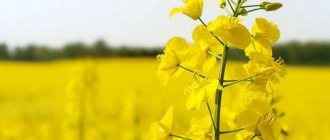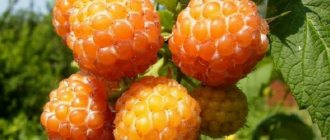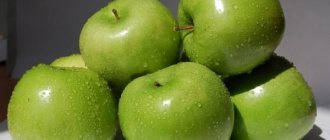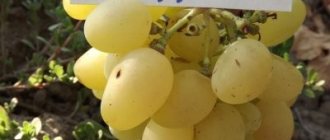In the fight against the spread of pathogenic viral, fungal and bacterial infections, you need to act quickly and as effectively as possible.
Topaz is on the list of the most effective fungicides that cope with various fungal diseases. We will talk about it in our article today. Dear readers! For you, we have created communities on social networks in which useful articles and interesting ideas are published several times a day! Subscribe and receive useful content in a convenient format!
Description of the drug, its characteristics and composition
The pesticide "Topaz" is a systemic fungicide. In simple terms, when it gets into the plant tissue, it quickly disperses into them and inhibits the fungal mycellium. And all because the fungicide spreads faster than the fungus. As a result, pathogenic microflora dies.
The fungicide is produced by the manufacturer in the form of an emulsion concentrate (CE marking on the packaging). To obtain a working solution for spraying, the emulsion concentrate is dissolved in water.
The main active ingredient that makes up the fungicide is penconazole.
In accordance with the recommendations of the manufacturer, the Syngenta company, Topaz is designed to protect a wide variety of cultivated plants (poma trees, stone fruit trees, vegetables, berry bushes, ornamental plants and flowers, grapes).
The drug is sold packaged in ampoules of 2 and 10 ml, as well as in liter bottles. This is the most common container, although you can find sachets with this drug.
Release form and composition
The main active ingredient is penconazole, which contains nitrogen and chlorine atoms. It is characteristic that, unlike many other drugs, the substance does not form a film on the surface of the leaves and is quickly absorbed by plant tissues. The suspension has an inhibitory effect.
This feature allows crops to be processed under different weather conditions and in any climate. When spraying with Topaz, you do not need to wait for certain days to get maximum results.
The drug is produced in large containers (1 liter each) and in ampoules (2 ml). It is a concentrated liquid; when used, it is mixed in water according to the instructions.
On a note! The shelf life of an unopened ampoule is 4 years.
Store away from food products, in places inaccessible to children and animals. It is advisable to use it in the first 2 years, since the concentration of the toxic element increases closer to the end of the period, then Topaz is disposed of.
The use of expired fungicide is prohibited due to severe toxicity.
In what cases is the use of Topaz prescribed?
This pesticide is used for powdery mildew and other infections caused by pathogenic fungal microflora.
Plants should be sprayed at the first symptoms of a fungal disease. If the trees in your garden often suffer from fungal infections, then it is advisable to carry out preventive treatment in early spring in order to destroy the infection at the root and prevent it from spreading throughout the cultivated plants.
ON A NOTE. Topaz protects treated crops for a period of 1.5-2 weeks. In this case, the preventive effect can last up to 60 days.
Mechanism of action
After treating the vegetative mass of plants, Topaz does not linger on its surface, but immediately penetrates inside. The active substance included in the drug suppresses fungal spores, both beginning to form and germinating, and prevents their further development.
Penconazole, together with the juice, moves through the vessels of the plants, enters the growing shoots and new growth, protecting them from the penetration of pathogenic fungi and their spores.
This active substance stops the biosynthesis process in fungal spores, as a result they and the fungus itself stop growing and do not develop further. And in a short time the affected plants are cured and grow stronger.
Topaz: Plant Treatment - video
What pests does the product work against?
The most important enemy that Topaz fights is downy mildew. Although the fungicide also helps with other fungal infections. Among them are various types of rust, oidium (the main disease of grapes), fruit rot (most often affects fruit crops, apple trees, pears, cherries, apricots). It is also noted that the fungicide is able to fight purple spot and gray mold.
Description and properties of the drug
Topaz belongs to the class of fungicides of the third hazard category. Refers to a type of systemic drugs from the group of triazoles that disrupt the processes of sterol biosynthesis in a variety of fungi. Thanks to this, it is effective both for prevention and for various degrees of invasion on plants (see video).
A targeted effect on the pathogen is achieved through the substance penconazole. Helps in the fight against various diseases:
- powdery mildew;
- rust on leaves;
- gray rot;
- purple spotting;
- oidium;
- coccomycosis.
Suitable for processing ornamental, fruit, berry and vegetable crops, including:
- cucumbers;
- gooseberry;
- currant;
- roses;
- cherry;
- peach.
Instructions for using the fungicide "Topaz" for different plants
The manufacturer recommends diluting the drug in a separate container of the required volume. Fill it one third with water and add the required amount of Topaz. Mix the product thoroughly and then bring the volume up to working volume. If you are treating a large area, do not forget to stir the solution occasionally to prevent sediment from forming. You can simply shake the sprayer.
ON A NOTE. One drop contains 0.05 ml of water, 1 ml contains 20 drops. Knowing this volume norm, you can use the most ordinary pipette from a pharmacy to dilute a solution of any working volume.
How to use for grapes
The main disease of the grapevine is oidium.
To treat this crop, you need 2 ml of product based on a volume of 10 liters of water. If your grapes are still young, then reduce the concentration by half: to 1 ml per 5 liters of water. Spraying should be carried out twice: the first time when signs of the disease appear, and the second time two weeks later to consolidate the result.
How to dilute cabbage
For cabbage, dilute 1 ml per 5 liters of water. If necessary, the rate can be reduced by a multiple of the required volume of liquid.
How to use for cucumbers
Cucumber often falls victim to powdery mildew. To prepare a standard solution of 10 liters, you need 2 ml of the drug. In case of particularly severe infection, the rate can be increased to 3 ml. For 1 hectare of cucumber beds, 1-1.5 buckets of the drug are enough.
If you have very few cucumbers, then reduce the amount:
- For 5 liters you need 1 ml of the drug;
- For 3 liters you need 12 drops of the drug.
Use a regular pipette to measure the required amount of fungicide.
Please note that the manufacturer advises carrying out gardening work no earlier than a week after using the drug.
Application for tomatoes
For tomatoes, 2 ml per 10 liters of water is enough to prepare a working solution of the pesticide.
For 5 liters you need 1 ml (20 drops), for 3 liters - 12 drops, for 2 liters - 8, for 1 liter - 4 drops of Topaz.
Treatment should be carried out no more than once every 2 weeks.
Use for strawberries
Strawberries need to be processed for the first time before abundant flowering. Repeated preventive spraying is carried out after the end of berry picking.
If you do not have a whole strawberry plantation, then 1 ml of suspension per 5 liters of liquid is enough. There are 20 drops in 1 ml. If you don't have a scored cap, use a regular dropper from the pharmacy.
How to breed for indoor flowers
At the slightest sign of powdery mildew or rust spreading among domestic flowers, they can be treated with Topaz solution.
The standard working solution, according to the manufacturer’s recommendation, is prepared based on a liquid volume of 10 liters. For this amount you need 4 ml of the drug. But since there will be a lot of buckets of fungicide for indoor flowers, you can prepare a solution of a smaller volume:
- For 5 liters you need 2 ml of product;
- For 2 liters you need 8 drops of the drug.
- For 1 liter you need 4 drops of the drug.
For garlic and onions
For garlic and onions, you usually do not need to mix a large amount of the preparation. 3 sometimes 5 liters is enough. Buy a sachet with a 2 ml ampoule. Dilute half in a 5-liter sprayer and process. For 3 liters you will need 12 drops of pesticide.
For garden flowers
When processing garden flowers, keep in mind that it is optimal to use about 1 bucket per hundred square meters of flower garden. To prepare this amount you need 4 ml of the drug.
If you have fewer flowers, reduce the volume of liquid and topaz. For 5 liters you need 2 ml, for 3 liters - 12 drops, for 2 liters - 8, for 1 - 4.
Flowers need to be sprayed during the growing season. For the entire season, 1 treatment is enough.
For roses
Roses respond well to a single treatment with this product. Most often, a liter or two-liter solution is prepared. You need 4 and 8 drops of Topaz, respectively.
If you have a lot of rose bushes, then it is much better to dilute a ten-liter solution.
How to breed for fruit trees
Fruit trees often suffer from fruit rot. The peculiarity of this disease is that even Topaz will not help them if they are severely infected. Because of this, processing must be carried out from the moment the first leaves bloom. Especially if your garden often suffers from fungal diseases.
For 10 liters of water you need 2 ml of fungicide. Repeat the treatment every two weeks. If you have a young garden with small trees, then there will be a lot of buckets of working solution. Then you are better off using 3 or 5 liter containers. For 3 liters of liquid you need 12 drops of the drug, and for 5 liters - 1 ml of Topaz, in other words, half an ampoule.
For an adult tree, you need to use up to 5 liters of the mixed working solution. For young trees, 2-3 liters, depending on the volume of the crown.
The drug Topaz: reviews of use
Ira, 54 years old, Leningrad region: Powdery mildew regularly appears on plants in my garden plot. I used different means, but the fungus quickly gets used to them and no longer dies. I saved my garden only with Topaz - I carried out a couple of treatments, and the powdery mildew disappeared. I can say that Oksikhom also turned out to be quite effective, but Topaz is cheaper and less toxic.
Elena, 46 years old, Tambov region: I am engaged in growing cucumbers in greenhouses and in garden beds for sale. And since the second half of summer, my cucumber beds have been affected by powdery mildew for many seasons, despite following all the rules of care. The season before last, a neighbor in a dacha cooperative advised using Topaz to combat this fungal disease. As soon as I noticed the appearance of the disease, I carried out the first spraying, and a couple of weeks later - the second. And the powdery mildew disappeared. Now I will do this regularly - treat cucumbers with Topaz when this disease appears.
The fungicidal drug Topaz is one of the best preventive and therapeutic agents against a number of fungal diseases on garden, vegetable and ornamental plants.
It is easy to dilute and easy to use, but fungi quickly get used to this product, so after a couple of treatments the drug has to be replaced with other fungicides that are also effective against these pathogens.
How to use fungicide in a greenhouse?
The very principle of using a pesticide in greenhouses and greenhouses does not differ from the principle of its use in a vegetable garden or garden. You also dilute the emulsion concentrate with water and process the vegetables.
But for a greenhouse you need to increase the rate. It requires 1.5 times more active substance and 2 times the consumption rate per unit area.
For example, if in the garden for most vegetables the standard is 2 ml of Topaz per 10 liters of water at a consumption rate of 100 ml per sq.m. Then in a greenhouse for the same crops you need 3.5 ml of the drug per 10 liters of water. In this case, the consumption rate increases to 200 ml per sq.m.
It is also critically important to use PPE in the greenhouse (closed suit, gloves, goggles, respirator), as well as to observe the exit deadline for work. It is equal to 7 days after spraying.
Topaz fungicide: composition and mechanism of action
The monocomponent fungicide Topaz consists of a single active substance of synthetic origin - penconazole. The content of this highly effective pesticide in the finished product is about 10% (1000 ml 100 g). Having been absorbed through the mouths in the leaves and penetrating into the plant tissue, penconazole moves through the vascular bundles from bottom to top and quite quickly covers the entire above-ground green part. It can be safely called not just a systemic drug, but a supersystemic one, because it destroys pathogens “on approach”, affecting only germinating spores.
The pesticide spreads through plant tissues faster than the fungal mycelium grows, therefore it is especially effective for preventive purposes. It concentrates in the apical part, being based in young tissue and following the growth point. Powdery mildew spore fungi and similar pathogens usually germinate in this same, most vulnerable and delicate zone. Topaz prevents them from turning around and immediately destroys the dangerous enemy. The drug has a triple effect:
- protects by accumulating at growth points and stopping the development of mycelium on newly growing fresh shoots;
- treats parts of plant organisms already affected by fungus;
- preventively protects crops against the development of spores, preventing them from germinating.
What substances is Topaz compatible with?
Summer residents have experimentally found that the drug is compatible with the following products:
- Biotlin;
- Ridomil Gold;
- Kuprosat;
- Decis;
- Zenith;
- Topsin-M;
- Kinmiks;
- Speed;
- Aktara;
- Zircon;
- Horus.
At the same time, when preparing the tank mixture, the Topaz solution must be poured first, and another drug must be poured into it.
Compatibility of the drug Topaz with other drugs
Topaz fungicide is compatible with other similar chemicals with an alkaline reaction, in particular it can be used in tank mixtures with:
- Kinmiks;
- Horus;
- Cuproxat.
However, before preparing the tank mixture, the compatibility of the drugs should be checked. To do this, small doses of fungicides are mixed in a container and watched to see if a chemical reaction occurs between them. If no precipitate forms, no heat is generated, or no bubbles appear in the liquid, then the substances taken are compatible with each other.
Important!
It is strictly forbidden to use Topaz simultaneously with drugs that have an acid reaction. At least 10-12 days should pass between treating plants with Topaz and such preparations.
Photo of the consumption rate of the drug Topaz
What analogues are there?
Analogues of Topaz are other pesticides based on penconazole, for example the drug Almaz.
The pesticides Jack Pot, Kemistar, Archer, Thiophene Extra, and Fulpas also have a similar effect.
You can also replace Topaz with folk remedies. For example, prepare the following preparation: 200 ml of milk + a teaspoon of salt. But the disadvantage of this drug will be its high cost due to the price of milk and low efficiency, since treatments will have to be carried out every fourth day.
Reviews from gardeners
Reviews left by professionals and beginners are 90% positive.
Maria Alexandrovna. I use Topaz rarely, but not at all because the substance is bad. Simply, for indoor plants it is enough to carry out such preventive measures once a year. I carry out the treatment in the spring. When do fungal diseases most often begin to develop? For a long time, Topaz never misfired.
Valentin Mikhailovich. Garden plants treated with Topaz (only carry out the procedure according to the instructions) are provided with protection for the entire season. Why do I focus on instructions? I recommended treatment with the product to a neighbor. He failed only because he did not study the nuances of use. Chemicals not only bring benefits, but can also cause harm.
Precautions for use
When using a pesticide in your summer cottage, first of all, you need to take care of your own safety. When treating your plantings with this pesticide, be sure to use a mask or respirator, as well as eye protection. Carry out work in a suit to prevent the drug from coming into contact with exposed skin.
Also, when using Topaz, you need to take care of the safety of beneficial insects and the plants themselves.
The product should not be used near bodies of water (rivers, lakes, ponds), as the pesticide may be toxic to fish.
Experienced gardeners advise not to spray plants with this pesticide in the morning during the flowering period. This will protect bees and other pollinators from poisoning. Therefore, in May it is better to spray flowering crops in the evening.
Manufacturer and general description of the fungicide
Fungicide "Topaz" was created by chemists well-known on the Russian market. The certificate of state registration of the drug issued to this company is valid until October 2021.
According to the certificate, “Topaz” is intended for the treatment and prevention of powdery mildew on the following crops:
- cucumbers;
- apple trees;
- grape;
ALL crops for which Topaz is used (click to expand)
- strawberries;
- currant;
- peach;
- roses.
According to existing information, the drug is not phytotoxic and is very well tolerated by plants, therefore other crops susceptible to powdery mildew can be safely treated with this fungicide.
"Topaz" is produced in the form of an emulsion concentrate. This preparative form allows you to store the drug for a long time and easily dilute it with water before use. When diluted, Topaz forms a stable dispersed system consisting of microdroplets of the drug evenly distributed in water.
In Russia, small packaging of Topaz is officially carried out. Syngenta itself produces this drug for agricultural production in 1-liter containers.
How to store the drug
Topaz can be stored for no more than 4 years from the date of manufacture by the manufacturer. The room temperature should be between -5 and +35 degrees. The room should also be dark and dry. In addition, make sure that the fungicide is not within the reach of children.
ON A NOTE. Experienced summer residents advise using the purchased fungicide within the first 2 years after its manufacture. It was noted that subsequently the concentration of toxic substances in the suspension increases, and the fungicide becomes more dangerous.
How to use correctly
Topaz is universal in all respects. Use is permitted at all stages of plant development. An undeniable advantage is the fight against pathogenic fungal spores without delay.
The most suitable time: early spring, late autumn. The specified treatment periods protect against the negative effects of pathogens.
It is during these periods: high humidity, low temperature. Even at -10 degrees, preventive application will be beneficial. After absorption, Topaz is absorbed into the plant juice, remaining in it for a significant period of time. Does not allow spores to begin division and reproduction.
Advantages and disadvantages of the product
Now a few words about the advantages and disadvantages of the drug.
Let's start by listing the advantages of the drug:
- Topaz is suitable for the vast majority of garden plants;
- Topaz is absorbed into the plant tissue and protects the entire plant, and not just the part that was treated with the pesticide;
- The product is not phytotoxic. Pesticides do not accumulate in fruits;
- High compatibility with many other drugs, including insecticides, which allows you to combine products for comprehensive protection against pests and diseases;
- The drug begins to act quickly;
- Topaz is extremely effective and does not require multiple treatments;
- The product is quickly absorbed, which protects it from being washed off by rain or during surface watering;
- Pathogenic fungi do not develop resistance to treatment with this fungicide, even if it is used regularly.
Among the disadvantages are the following qualities:
- The diluted solution must be used quickly enough;
- The product is toxic to fish;
- During the flowering period, it is advisable to exclude morning processing so as not to harm pollinating insects;
- Despite all the advantages, after 3 years of use you need to take a break to prevent the accumulation of nitrates in the soil.
Benefits of Topaz fungicide
- It is a universal remedy because it is suitable for a large number of plants of different species;
- Effectively acts both as a prophylactic and as a therapeutic agent;
- Protects all parts of plants from fungal infection;
- It is not washed off with water during watering and is not exposed to rain;
- Has a low consumption rate;
- Affordable price;
- Does not cause phytotoxicity;
- Can be used in conjunction with surface irrigation;
- Compatible with other drugs that are suitable for their duration of use;
- Possibility of use on a personal plot, as well as in an apartment.
Common mistakes
- Using an expired drug. After the expiration date, Topaz becomes toxic and cannot be used.
- Use the finished solution one day after production. In this case, the treatment will be useless, since the solution will lose all its healing properties.
- Neglect of protective measures. Topaz is a pesticide, so when working with it you need to follow at least basic rules to protect your own health (use of PPE).
- Failure to comply with dosage. Do not exceed the rate specified by the manufacturer for preparing the working solution.
- Work is carried out in hot or windy conditions. In the first case, plant leaves may get sunburned, and in the second, the applied product will quickly evaporate.
Safety precautions
The main rules when working with fungicides:
- Before the procedure, wear protective clothing (mask, gloves, shoes).
- For work, use separate containers, which after processing should be disposed of or left in a safe place until the next procedure.
- Do not eat vegetables or fruits treated with the drug.
- In case of contact with skin, rinse thoroughly with water.
- If the solution gets on your face, rinse your eyes and mouth thoroughly.
- In case of internal contact, take a couple of tablets of activated carbon and drink water. In case of mild poisoning, you can rinse the stomach; if the condition worsens, call a doctor.
- Spent ampoules must be disposed of.
Answers to popular questions
What can this fungicide be used for?
The main disease that Topaz fights is powdery mildew. Many cultivated plants are susceptible to this disease. This pesticide also helps to cope with many other fungal infections.
What plants is Topaz suitable for?
For almost everyone - from indoor flowers to vegetables and trees.
Is it possible to mix Topaz with other products?
Yes, the drug can be used in the preparation of tank mixtures. For example, combine it with Biotlin, Aktara and even Zircon.
How often should a pesticide be used?
Usually 2 applications per season are sufficient. But no more than 4. It all depends on the degree of infestation of your garden. In spring, Topaz can be used only for preventive purposes to prevent the spread of infection.
Description, properties, mechanism of action of the drug
Fungicide with systemic action Topaz is intended for the protection of all types of garden, ornamental, vegetable crops and vineyards. The drug destroys:
- powdery mildew;
- rot;
- oidium;
- coccomycosis;
- purple spotting;
- rust;
- septoria.
The drug is classified as a systemic pesticide. Topaz can be used at different stages of disease development for preventive and therapeutic purposes. It penetrates into the plant and is absorbed in safe concentrations. Then it moves through its organs (roots, leaves, stem, flowers).
Topaz is non-phytotoxic; plant damage occurs only when overdosed in combination with unfavorable natural factors.
The effect of the drug, according to the manufacturer and reviews from gardeners, is both preventive (protective) and therapeutic (eradicating). It prevents infection and stops the development of pathogens. If colonization by spores has already occurred, Topaz acts on the mycelium and reproductive organs of pathogens, contributing to their death. It is a good fungicide for grapes and many other crops.
Resistance to the drug develops over time. If the frequency of treatments exceeds that specified in the instructions for use, it must be alternated with other fungicides or folk remedies.
Important! Topaz can be used on one site for no more than 3 years in a row.
The drug cannot be used close to bodies of water, but it is approved for aerial treatment. It begins to act after 2-3 hours. Quickly absorbed. If it rains after 6 hours, the drug will have time to act fully.
The duration of the drug is 10-14 days, the preventive effect is up to 2 months.
Topaz can be used in tank mixtures with other chemicals, including insecticides and fertilizers. Preparations containing metal oxides, such as iron and copper, should not be combined with anything.
Topaz hazard class is third, it is considered moderately toxic. It is better to process plants in a quiet, windless evening, so as not to harm the bees.
Topaz is especially effective against powdery mildew, which, in fact, was created to combat. Then its effect on other fungal diseases was noticed, which were added to the list later.
Horus
A drug with a wide spectrum of action, which is aimed at combating several pathologies of grapes. These include mildew, oidium, spotting, scab, and gray rot.
Produced by the Swiss company Syngent in the form of granules, packaged in 1, 3 or 15 g, as well as in kilograms.
The dosage is 6 g per 5 liters of water; vineyards can be treated no more than 3 times per season.
I advise using Horus only on young bushes - old leaves are too thick, so the drug will not be able to penetrate the tissue.
How to use
The peculiarity of Horus is that it has a directional effect. After treatment, the drug does not spread with the plant current, but penetrates into the leaf blades and berries. The period of penetration is 2 hours from the moment of the procedure.
You need to spray very carefully, without missing a single leaf, otherwise there will be no result from spraying.
Advantages and disadvantages
- complex impact;
- rapid penetration of the active component into tissues;
- convenient release form;
- low toxicity;
- does not contaminate groundwater.
- the drug is ineffective at temperatures below 3 and above 25 degrees;
- does not work on old bushes;
- Grapes must be processed within a certain time frame, otherwise the effectiveness will decrease.
Expert opinion
Tailor Naum Yakovlevich
leading agronomist of the experimental breeding station
“My Horus at a concentration of 12 g per 10 liters instantly stopped an outbreak of mildew in the vineyard. I treated old bushes in the second half of July, for young ones I took 6 g of the drug per 10 liters of water, spraying was carried out before flowering for preventive purposes.”
Drug Strobi
A drug to combat the two most common diseases - oidium and mildew. According to my experience, Strobi works best for preventive purposes, and it is not the bushes that need to be treated, but the soil.
Strobi is available in 2 gram packs. To prepare a prophylactic solution, the bag is diluted in 10 liters of water, for a therapeutic solution - in 6 liters of water.
Consumption – 10 liters per 1 hectare of vineyard. The effect lasts 7-14 days.
It’s worth noting right away that it cannot completely destroy the fungus 100%, especially with a large-scale infection. If you want to destroy the disease, you will have to use two drugs in combination.
How to use for treatment
Strobi is a fungicide, but is essentially a natural antibiotic. It is produced by beneficial microorganisms, suppresses the cellular respiration of fungi and destroys them. Thanks to this, the drug has low toxicity and does not accumulate in soil and fruits.
If you prefer to grow grapes with minimal use of chemicals, Strobi is perfect.
Advantages and disadvantages
- lack of phytotoxicity;
- Possibility to use during flowering;
- economical consumption;
- safety for humans, animals and pollinating insects;
- preservation of beneficial properties even in conditions of high humidity.
- relatively low efficiency;
- the need to accurately calculate the dosage, otherwise the treatment will be useless.
Grape Rescuer
A product that combines an insecticide and a fungicide, that is, it fights both fungi and insect pests.
But don’t rush to the store - I recommend using it only in extreme cases when other drugs are ineffective.
The drug is available in two forms - ampoules with liquid or powder packaged in sachets. Dosage – 3 ampoules or 2 packets per 10 liters of water. This volume of the mixture is enough to process 1 hundred square meters of vineyards.
"Rescuer" should be used with great caution - it can leave burns on the leaves and accumulate in the fruits.
Mechanism of action
Grape Rescuer contains three components. It destroys aphids, phylloxera, mites, weevils, as well as mildew, anthracnose, gray mold, bacterial cancer with the help of insecticides and fungicides. It also contains an environmental stimulant that activates the growth of grapes.
The instructions indicate that the drug can be used for preventive purposes, but I recommend choosing a milder product. In addition, you should not use it in combination with other products, otherwise you can poison the plant.
Advantages and disadvantages
- good efficiency;
- wide spectrum of action;
- lack of resistance in insects and fungi;
- efficiency;
- long lasting effect.
- high toxicity - the drug can be dangerous not only for humans, but also for plants;
- may leave burns on the leaves.
Convertible Top
The drug is suitable for those who want to combine effectiveness, a wide spectrum of action and low cost. Unlike many other fungicides, it was developed specifically for grapes, that is, it takes into account all the characteristics of the crop and its diseases.
The product is packaged in 20 g and 1 kg. The dosage is 20 g of the substance per 10 liters of water, the consumption is 100 ml of the mixture per square meter.
The product is effective and potent in every sense.
Even a small amount of product that gets on the skin can cause serious burns, so you need to work with it very carefully.
How to use for treatment
Cabrio Top contains two active ingredients and is effective against mildew, oidium, black spot and rubella. Spraying can be carried out for preventive or therapeutic purposes, and the product copes even with advanced infections.
The duration of exposure is also impressive - prevention can be carried out every six months or even a year, depending on weather conditions. To treat grapes, treatment is carried out no more than four times per season.
If after the fourth treatment the signs of the disease have not disappeared, you need to change the fungicide. This means that the fungal spores are immune to the effects of the active substance.
Advantages and disadvantages
- long-term exposure;
- high efficiency;
- wide spectrum of action;
- low probability of developing resistance in pathogenic microorganisms;
- reasonable cost;
- low consumption of working solution;
- weather resistance;
- ease of use.
- high toxicity to humans and animals;
- The drug cannot be used on other crops.
Fungicide Quadris
If you need a remedy to combat several fungal diseases at once, feel free to choose Quadris. It acts against oidium, mildew, powdery mildew, gray mold and other common problems.
In addition, it prolongs fruiting and even improves the presentation of the fruit. Available in easy-to-dissolve liquid form.
I recommend using it in cases where almost ripe berries are affected by fungi, that is, other means can no longer be used.
However, do not forget that the last spraying should be carried out no later than 25 days before harvest.
Instructions for use of Quadris
The peculiarity of Quadris is that it “uses” a completely new approach - it cuts off oxygen to spores and bacteria, after which they die. The process occurs very quickly - it takes about an hour to destroy a fungal colony, and 48 hours to completely cure the plant.
The dosage is 1 ml of the drug per 10 liters of water, consumption is liter of mixture per hectare of vineyard.
You can use the drug in combination, but I don’t see the point in this - the effectiveness of Quadris is high enough to cope with infection. Some winegrowers use it in addition to Topaz, Radomil, Actellik.
Quadris cannot be used together with herbicides, because their characteristics are different. If you need to make a choice between Horus and Quadris, alternate these drugs - the grapes will not develop an addiction.
Advantages and disadvantages
- a new principle of action on fungi;
- high, long-term effectiveness;
- slight toxicity;
- increasing fertility;
- safety for pollinating insects.
- high price;
- the drug is phytotoxic with a pronounced threshold effect (i.e. in case of overdose).
Expert opinion
Alexey Veremeenko
historian and practitioner
“I was advised to use the fungicide Quadris to combat anthracnose. The year turned out to be rainy, and the disease affected the entire vineyard. I didn’t regret the money spent - thanks to the drug I was able to save the harvest.”
Preparation of Topaz working solution
It is very easy to prepare working fluid from emulsion concentrate. The main thing is to mix the drug well in water, remembering that it does not dissolve, but rather forms a dispersed system.
To prepare Topaz for use, non-chlorinated water at room temperature is required. According to the instructions, the required amount of the drug is measured and poured into water. After this, the liquid is vigorously shaken or stirred for 3-5 minutes.
Tip #1. “Topaz” forms a fairly stable emulsion, but the working fluid should not be stored for a long time. After preparation, it must be used within 1-2 hours. When processing, it is advisable to shake the sprayer from time to time.
